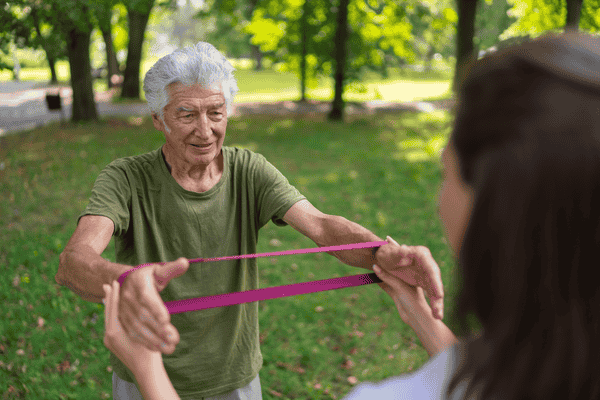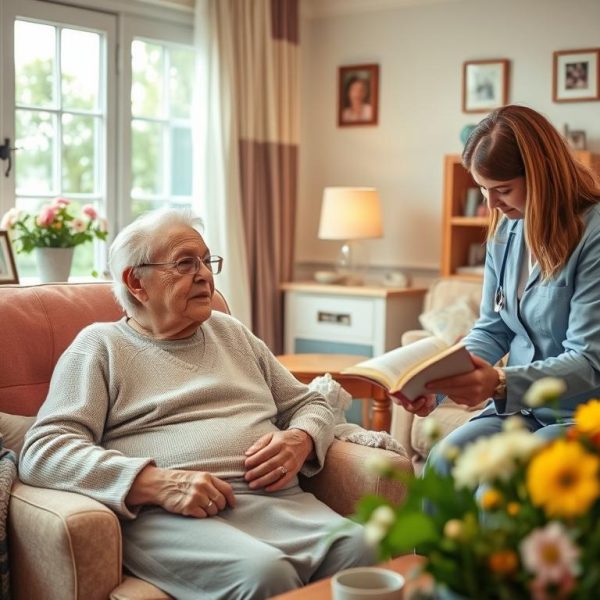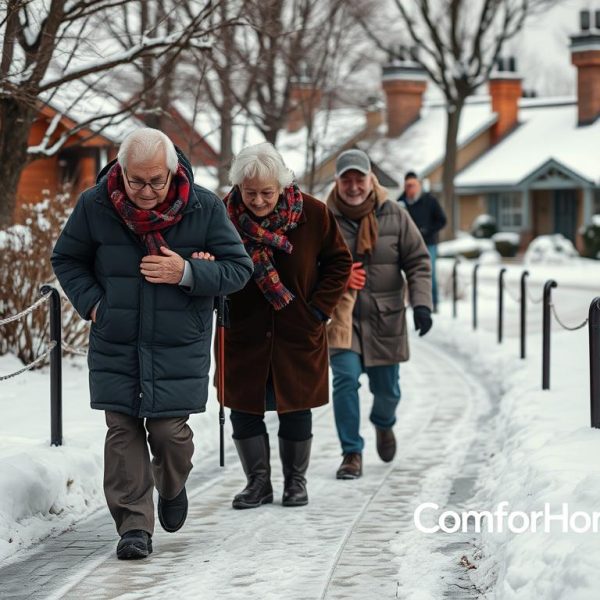John was 75 years old when he first heard the words “high blood pressure” at his doctor’s office. Like many elderly individuals, he hadn’t thought much about his heart health until it became a pressing issue. His doctor explained that high blood pressure, also known as hypertension, could put him at risk for stroke or heart disease, but she also reassured him that it wasn’t too late to take control of his health. One of her main recommendations? Aerobic exercise to lower blood pressure in seniors.
John had never considered himself a fitness enthusiast. He enjoyed gardening and taking short walks, but the idea of structured exercise was foreign to him. However, when his daughter encouraged him to try something new to help lower his blood pressure, John committed to exploring the world of aerobic exercise. He soon discovered not only its heart-healthy benefits but also how simple and enjoyable it could be. Over time, John noticed a significant improvement in his blood pressure readings, and his energy levels soared.
This is John’s journey, and through it, we will explore eight effective ways aerobic exercise can lower blood pressure in elderly individuals. His story may just inspire you or a loved one to make a heart-healthy change, too.
1. Strengthening the Heart Muscle
One of the first things John learned was how aerobic exercise strengthens the heart muscle. By engaging in activities like brisk walking or swimming, the heart becomes more efficient at pumping blood. When the heart is stronger, it doesn’t need to work as hard to circulate blood, which helps lower blood pressure naturally. Over time, John’s regular walks gradually strengthened his heart, and his doctor was pleased to see his blood pressure readings begin to drop.
For seniors, strengthening the heart through aerobic exercise is a key way to improve cardiovascular health. Activities such as cycling, water aerobics, or dancing all contribute to this improvement by making the heart a more efficient pump.
2. Improving Blood Vessel Flexibility
One of the lesser-known benefits of aerobic exercise is how it improves the flexibility of blood vessels. As John continued with his exercise routine, the rhythmic movement and increased blood flow encouraged the release of nitric oxide in his blood vessels. Nitric oxide helps relax and widen the blood vessels, allowing blood to flow more easily. When blood vessels are more flexible, they are less likely to constrict, leading to lower blood pressure levels.
This process was explained to John by his doctor during one of his check-ups. She emphasized that as the blood vessels relaxed, his risk for complications related to hypertension, such as heart attacks and strokes, decreased. The simple act of walking each day was doing more than just boosting his energy—it was helping his blood vessels work more efficiently.
3. Reducing Stiffness in Arteries
As people age, arterial stiffness becomes a common issue, which can contribute to high blood pressure. Aerobic exercise helps reduce this stiffness by increasing blood flow and keeping arteries more pliable. John, who had been dealing with slightly elevated blood pressure for years, was relieved to learn that something as straightforward as walking could positively impact his arteries.
Aerobic activities that promote circulation, such as cycling or swimming, allow the heart to pump blood more easily through the arteries. Over time, this reduces arterial stiffness and decreases the amount of pressure needed to move blood through the body, resulting in blood pressure. John’s commitment to aerobic exercise was slowly softening the stiffness in his arteries, and his efforts were paying off.
4. Enhancing Blood Flow Efficiency
As John’s daily walking routine became more consistent, he noticed that he no longer felt short of breath after moderate physical activity. This was because aerobic exercise was improving his circulation and the efficiency with which his blood flowed throughout his body. Better blood flow means that the heart can pump blood with less effort, further helping to reduce blood pressure.
For seniors like John, enhancing blood flow is essential for maintaining heart health. When blood moves through the vessels smoothly and efficiently, the heart doesn’t have to work overtime. In John’s case, his doctor was pleased to note that his heart rate had improved, and his blood pressure was slowly but steadily moving toward healthier levels.
5. Reducing Stress Hormones
High levels of stress hormones, such as cortisol and adrenaline, can contribute to elevated blood pressure. When the body is under stress, the fight-or-flight response triggers an increase in heart rate and blood pressure as a way to prepare for a perceived threat. While this response can be helpful in short-term situations, chronic stress can lead to persistently high blood pressure levels, especially in seniors.
John’s journey to lower blood pressure in seniors wasn’t just about physical exercise—it was also about managing stress. As he engaged in regular aerobic activities, he found that his overall stress levels decreased. His doctor explained that aerobic exercise helps reduce the production of stress hormones while increasing the release of endorphins, which create a feeling of well-being. John found this to be true, as his daily walks became a form of meditation, allowing him to clear his mind and relax.
For many elderly individuals, finding an aerobic activity that helps manage stress is a critical step toward controlling blood pressure. Whether it’s walking, cycling, or swimming, these activities not only strengthen the body but also calm the mind.
6. Promoting Weight Loss
Maintaining a healthy weight is essential for managing blood pressure, and aerobic exercise plays a significant role in promoting weight loss. John, like many older adults, had gained a few extra pounds over the years, and his doctor had explained that excess weight can contribute to high blood pressure. By incorporating aerobic exercise into his daily routine, John began to shed some of that extra weight.
As he lost weight, his blood pressure readings improved. This is because carrying less weight means the heart doesn’t have to work as hard to pump blood throughout the body. In addition, regular aerobic exercise helps reduce visceral fat—the fat that surrounds the organs—which is known to contribute to high blood pressure.
John’s experience is not uncommon. For seniors who struggle with weight management, aerobic exercise offers a practical and effective way to achieve weight loss, which in turn helps lowers blood pressure.
7. Improving Insulin Sensitivity
John was surprised when his doctor mentioned that aerobic exercise could also improve his insulin sensitivity. While he hadn’t been diagnosed with diabetes, she explained that better insulin sensitivity helps the body regulate blood sugar levels more effectively, which can indirectly impact blood pressure.
When the body becomes more efficient at using insulin, blood vessels remain healthier, and the risk of hypertension is reduced. Aerobic exercise helps the muscles use glucose more effectively, which lowers blood sugar and reduces the risk of developing type 2 diabetes—a condition that can complicate blood pressure management.
For seniors like John, engaging in aerobic exercise not only helps keep blood pressure in check but also supports overall metabolic health.
8. Building Endurance and Reducing Fatigue
One of the most rewarding aspects of John’s journey was the way aerobic exercise improved his endurance and reduced fatigue. When John first started walking, he could only manage about 10 minutes before feeling winded. However, as his endurance increased, he found himself walking longer distances without feeling tired.
This improvement in endurance was more than just a confidence boost—it also contributed to lowering his blood pressure. When the body becomes accustomed to regular aerobic exercise, the cardiovascular system works more efficiently, reducing the heart’s workload and helping blood pressure stay within a healthy range.
For elderly individuals who experience fatigue easily, aerobic exercise can help build endurance over time, allowing them to stay active and continue managing their blood pressure effectively.
Conclusion: Taking Control of Blood Pressure through Aerobic Exercise
John’s story is a testament to the power of aerobic exercise in lowering blood pressure and improving overall health for seniors. Through consistent, manageable activity, John was able to strengthen his heart, improve blood flow, reduce arterial stiffness, and manage stress—all key factors in lowering blood pressure.
For elderly individuals facing similar health concerns, aerobic exercise offers a simple yet effective solution. Whether it’s walking, swimming, or cycling, the benefits of regular aerobic activity are undeniable. As John’s journey shows, it’s never too late to take control of your cardiovascular health and make meaningful, lasting changes.
By incorporating aerobic exercise into your routine, you too can unlock the many benefits of improved blood pressure, better heart health, and an enhanced quality of life.









I gotta bookmark this website it seems very beneficial extremely helpful
Excellent goods from you, man. I’ve be aware your stuff prior to and you are simply extremely fantastic. I really like what you’ve received here, really like what you are saying and the best way wherein you say it. You’re making it entertaining and you continue to take care of to keep it wise. I can not wait to read much more from you. This is really a terrific web site.
The other day, while I was at work, my sister stole my apple ipad and tested to see if it can survive a forty foot drop, just so she can be a youtube sensation. My apple ipad is now destroyed and she has 83 views. I know this is completely off topic but I had to share it with someone!
An interesting discussion is worth comment. I think that you should write more on this topic, it might not be a taboo subject but generally people are not enough to speak on such topics. To the next. Cheers
I’m curious to find out what blog platform you happen to be utilizing? I’m having some minor security problems with my latest site and I’d like to find something more safeguarded. Do you have any suggestions?
obviously like your web-site however you need to check the spelling on several of your posts. Many of them are rife with spelling problems and I in finding it very troublesome to tell the truth on the other hand I will surely come back again.
I was very happy to search out this web-site.I needed to thanks in your time for this glorious read!! I undoubtedly enjoying every little little bit of it and I’ve you bookmarked to check out new stuff you blog post.